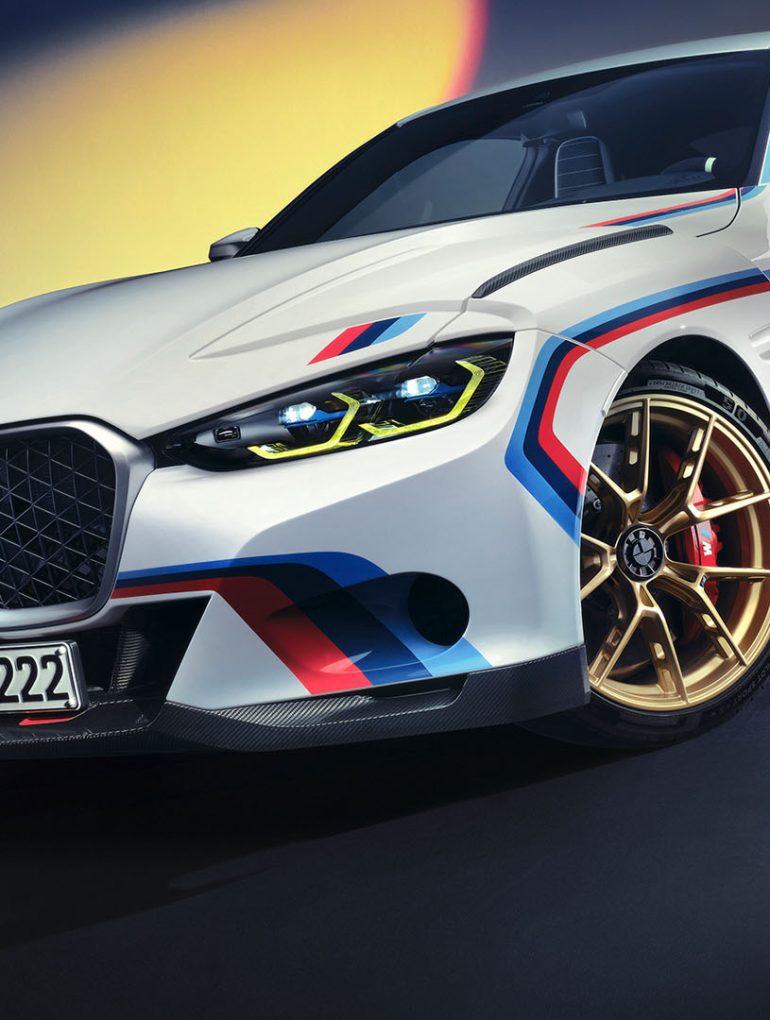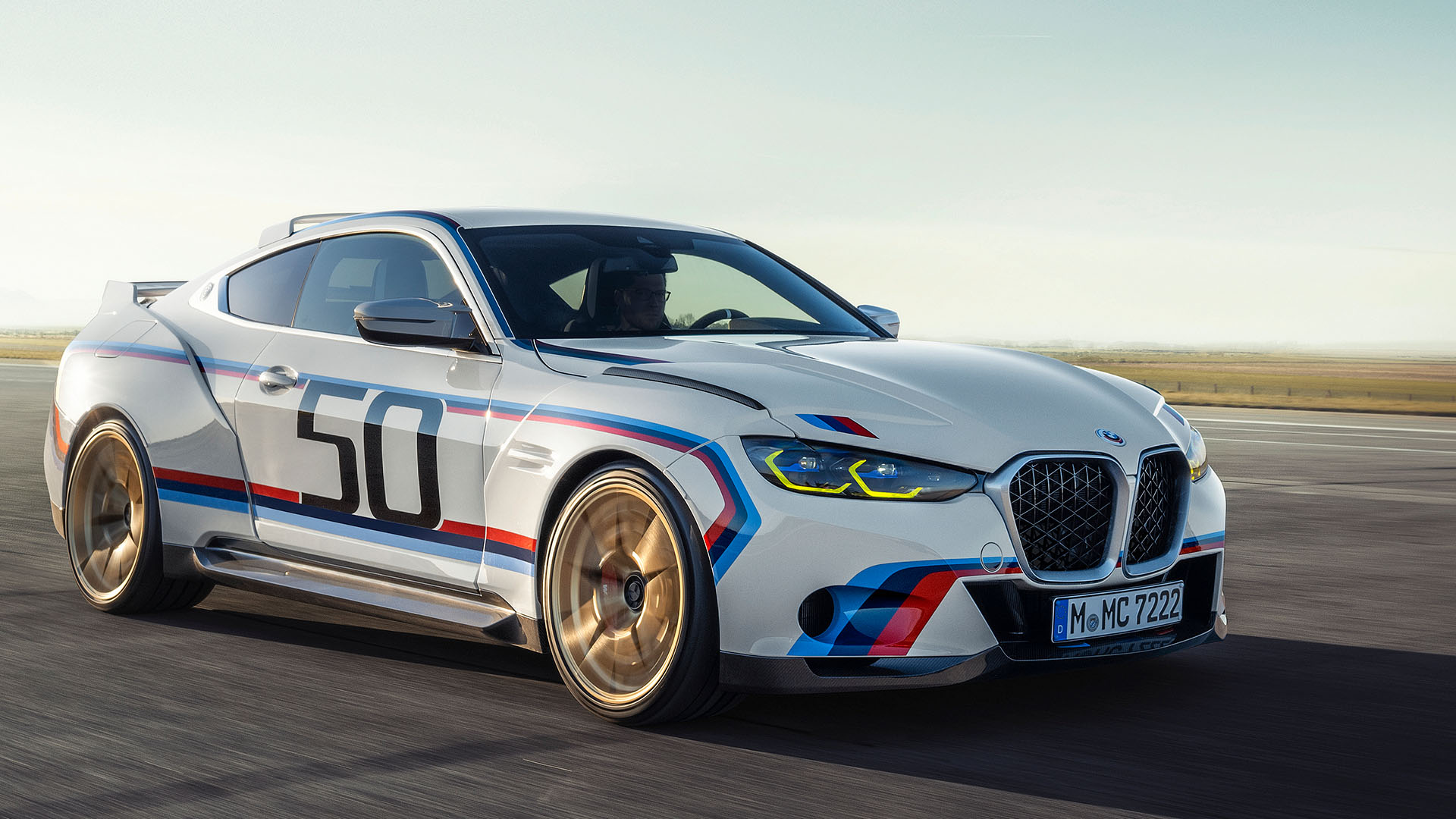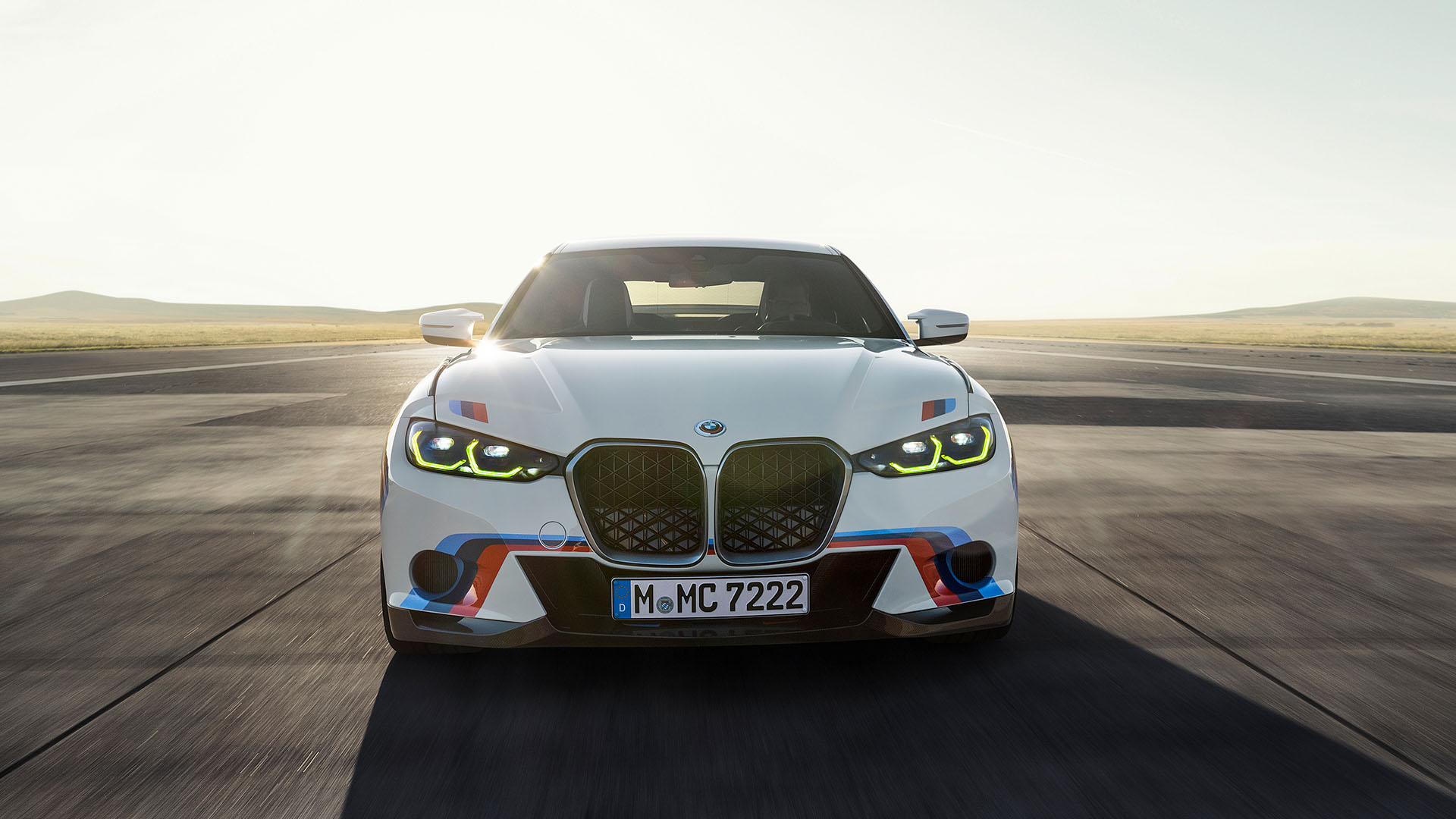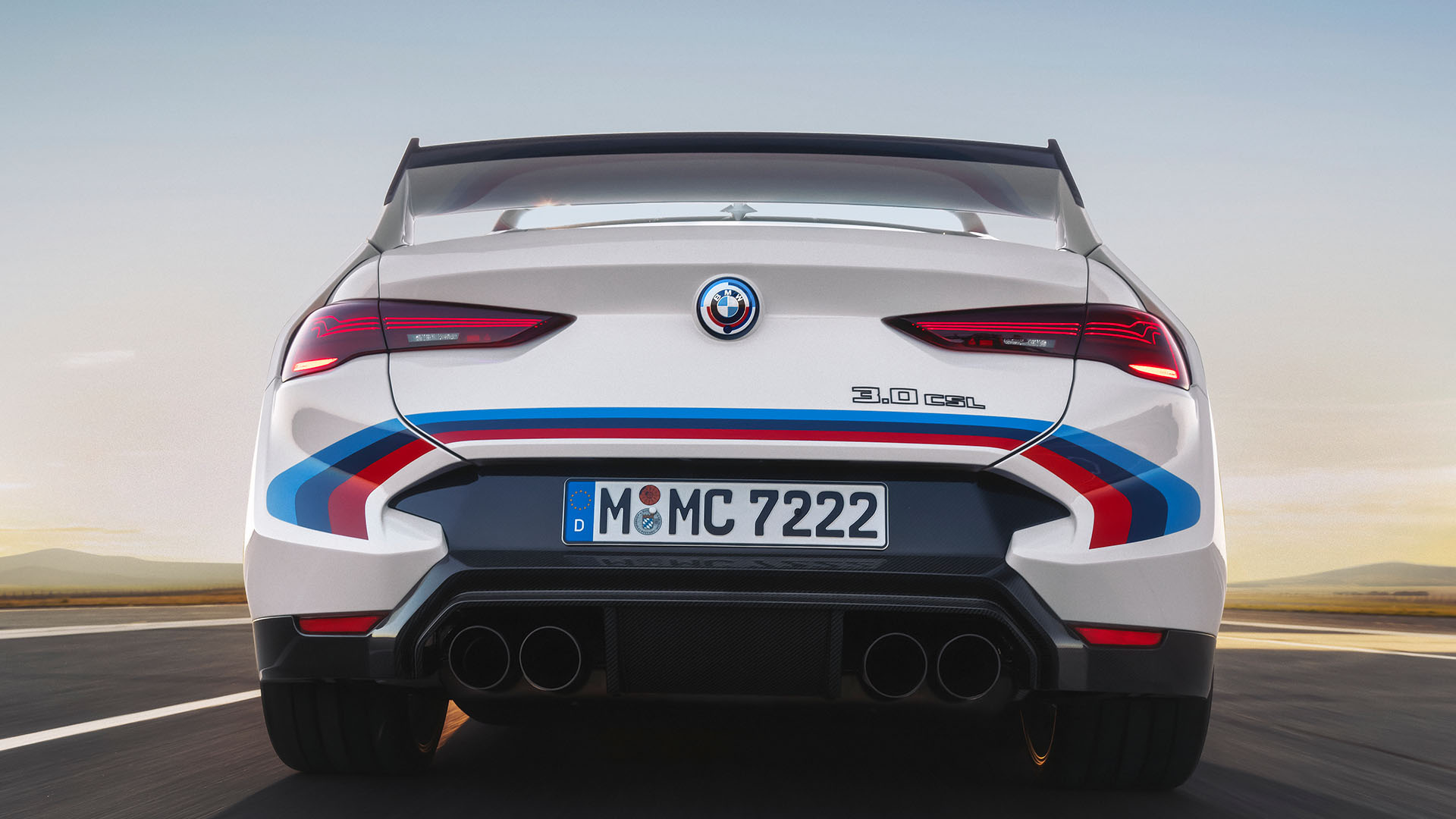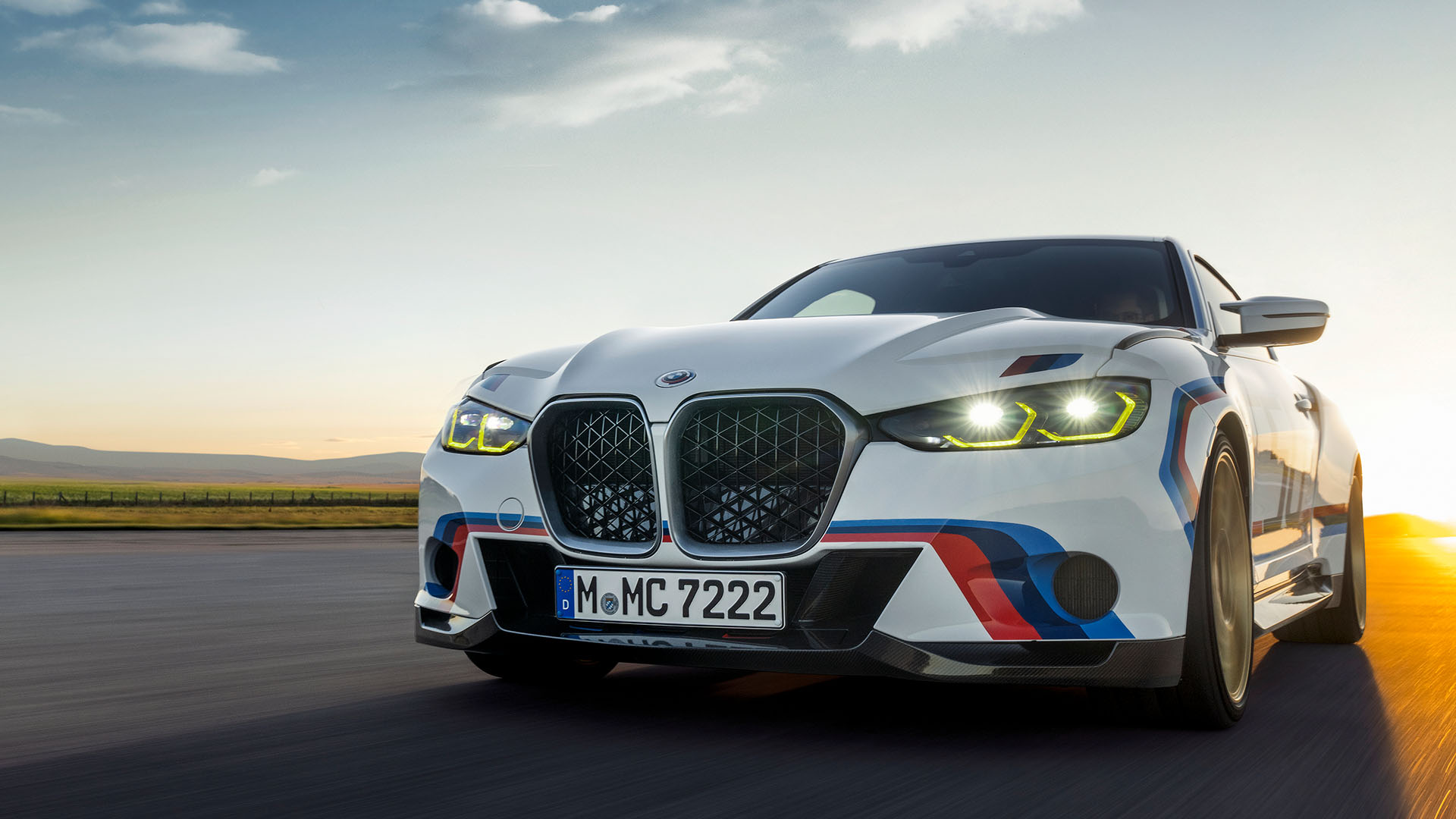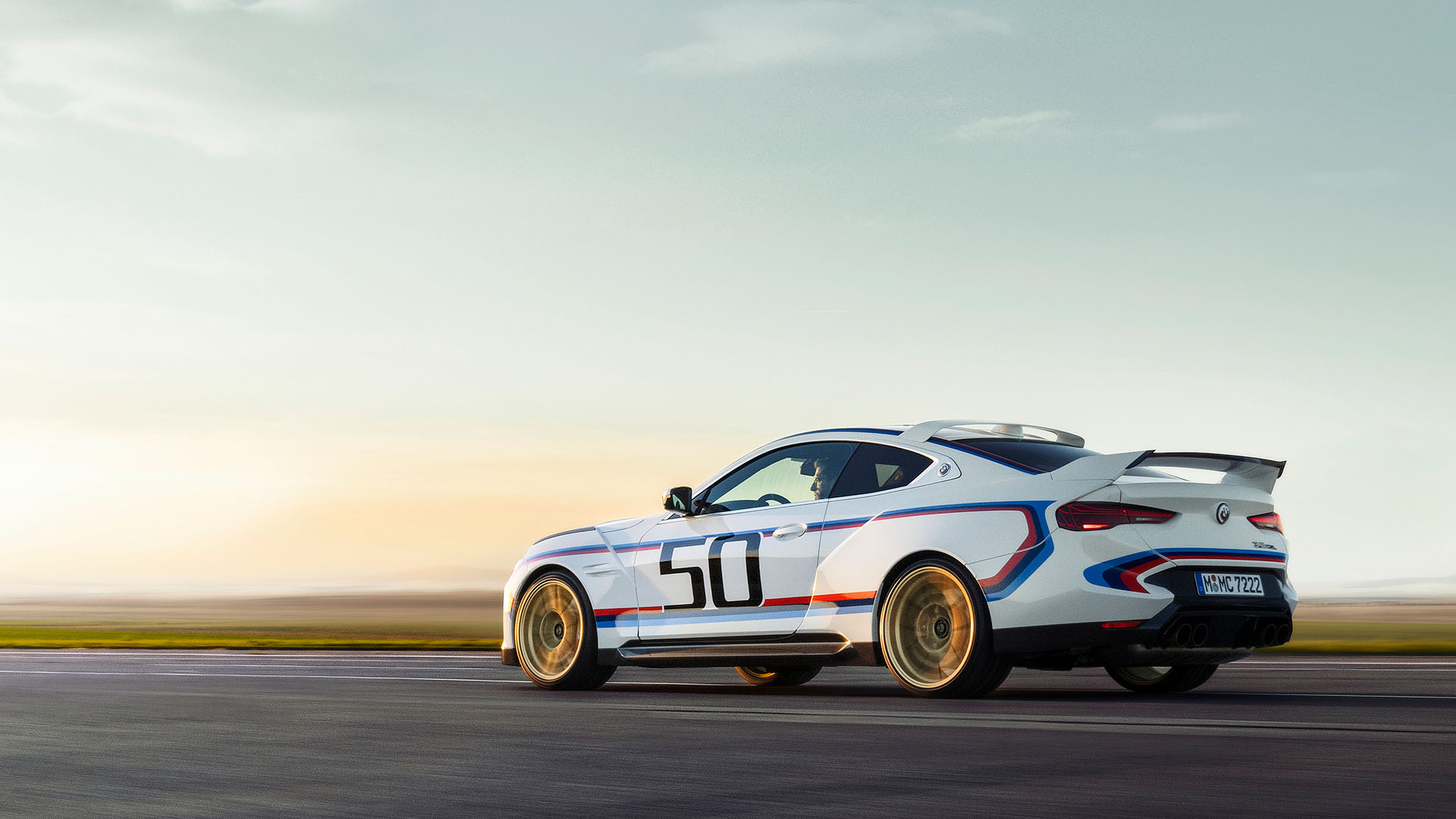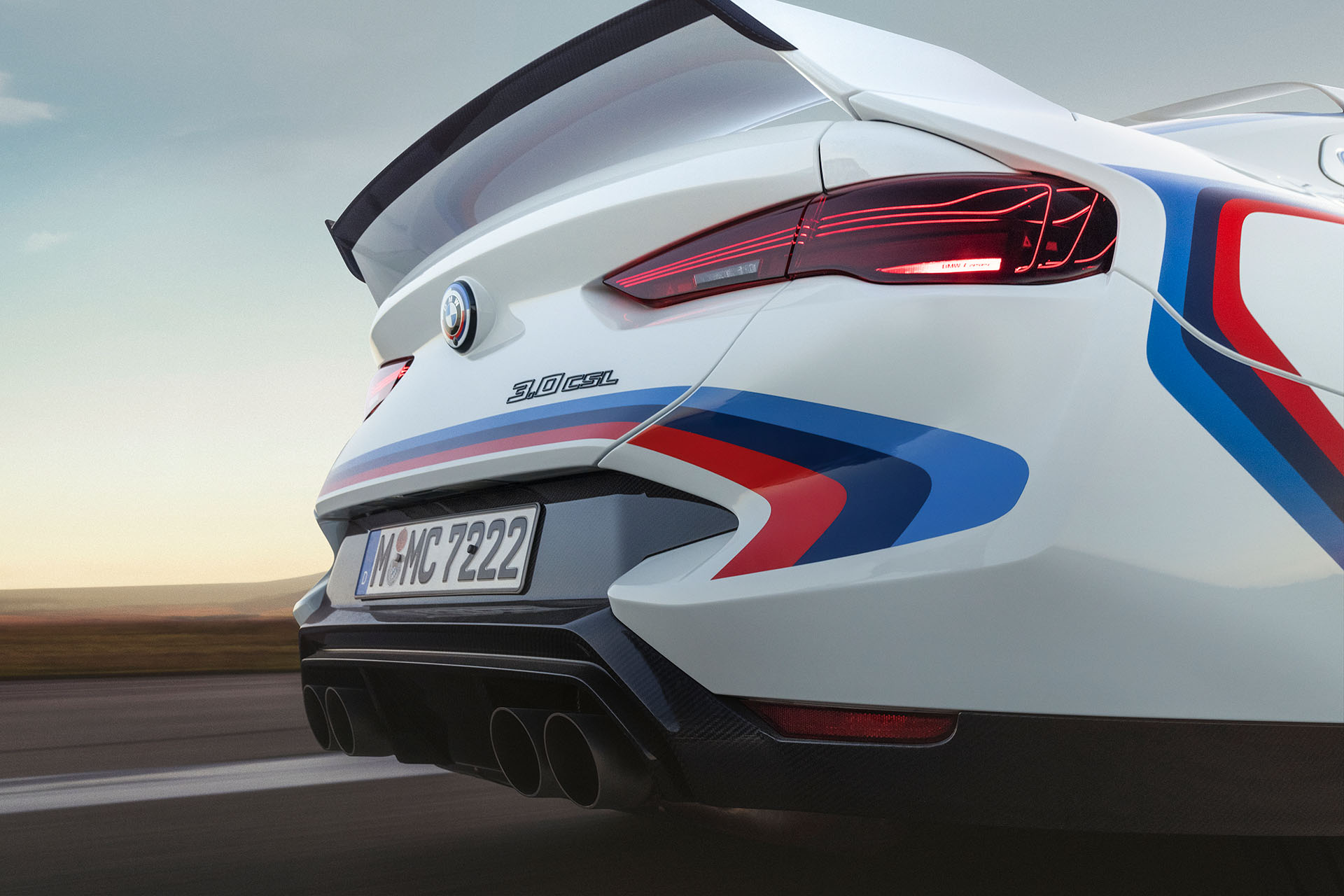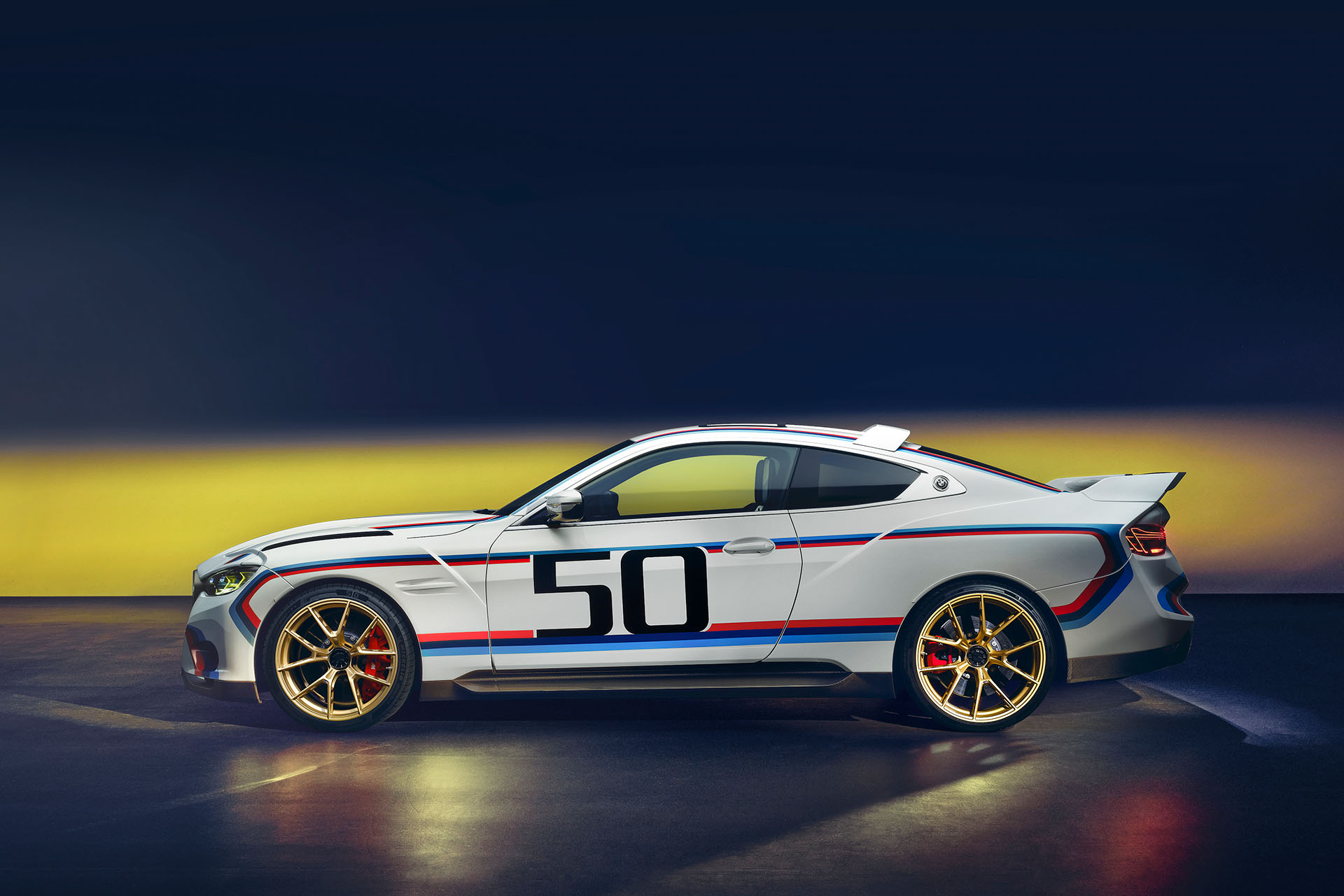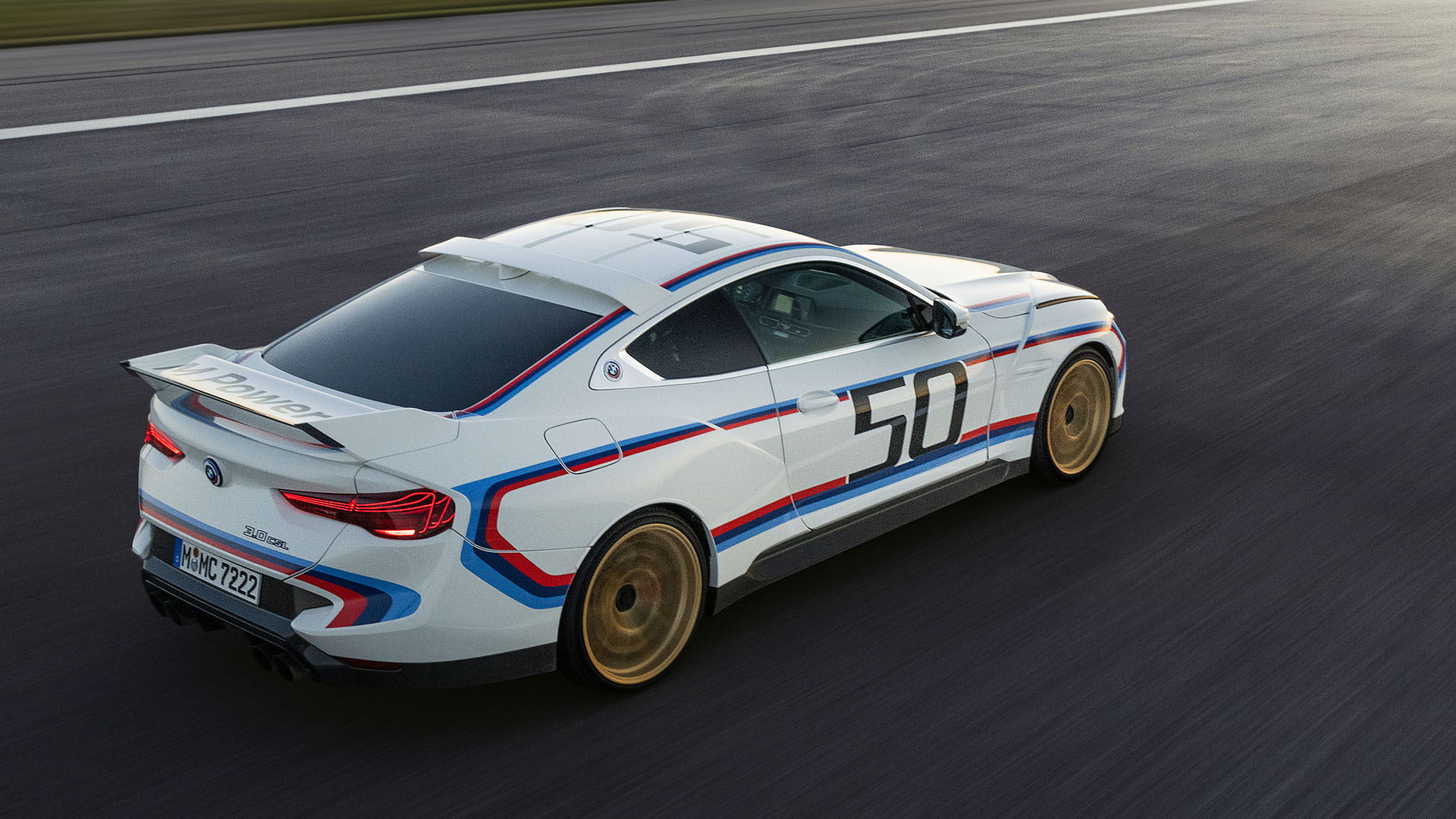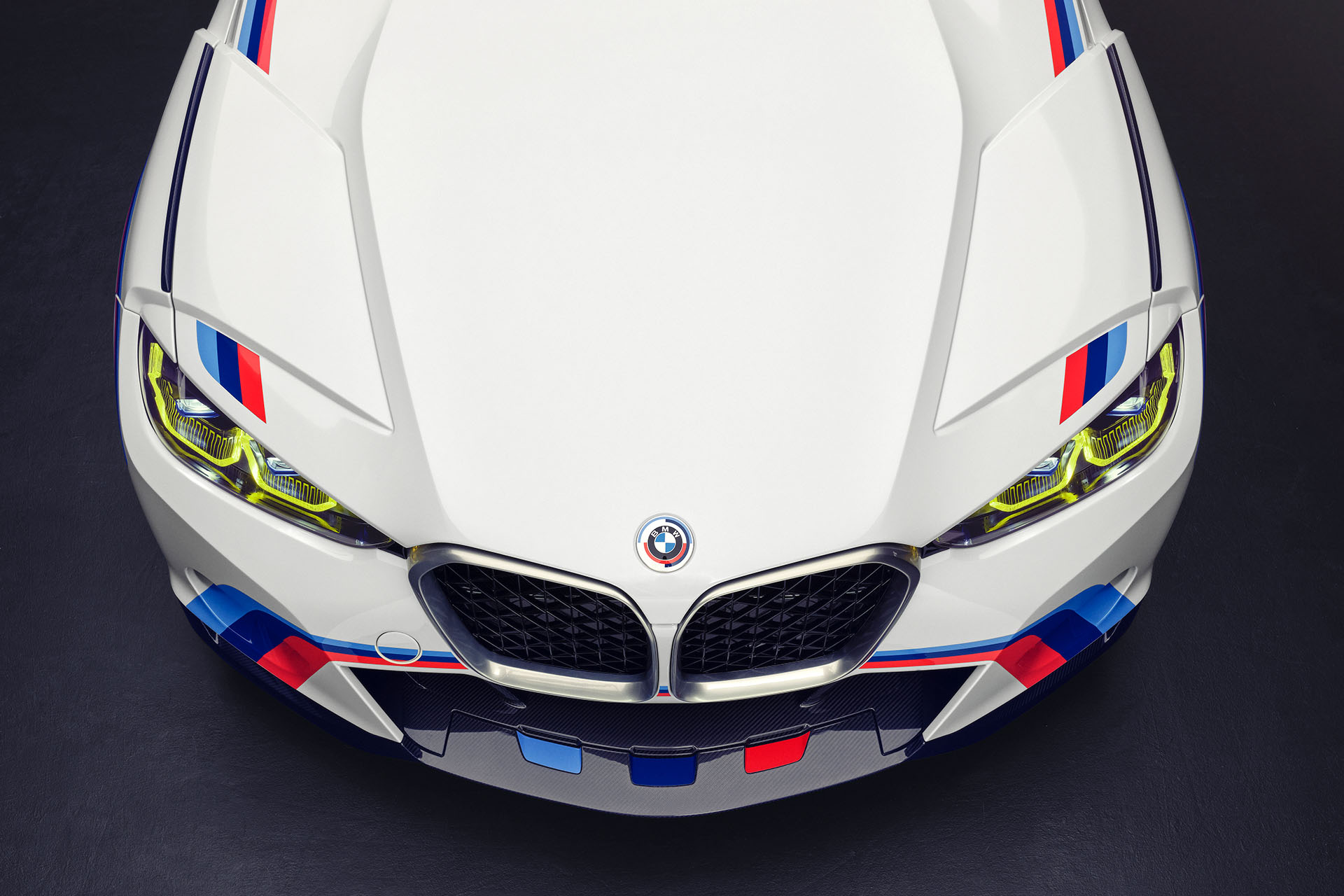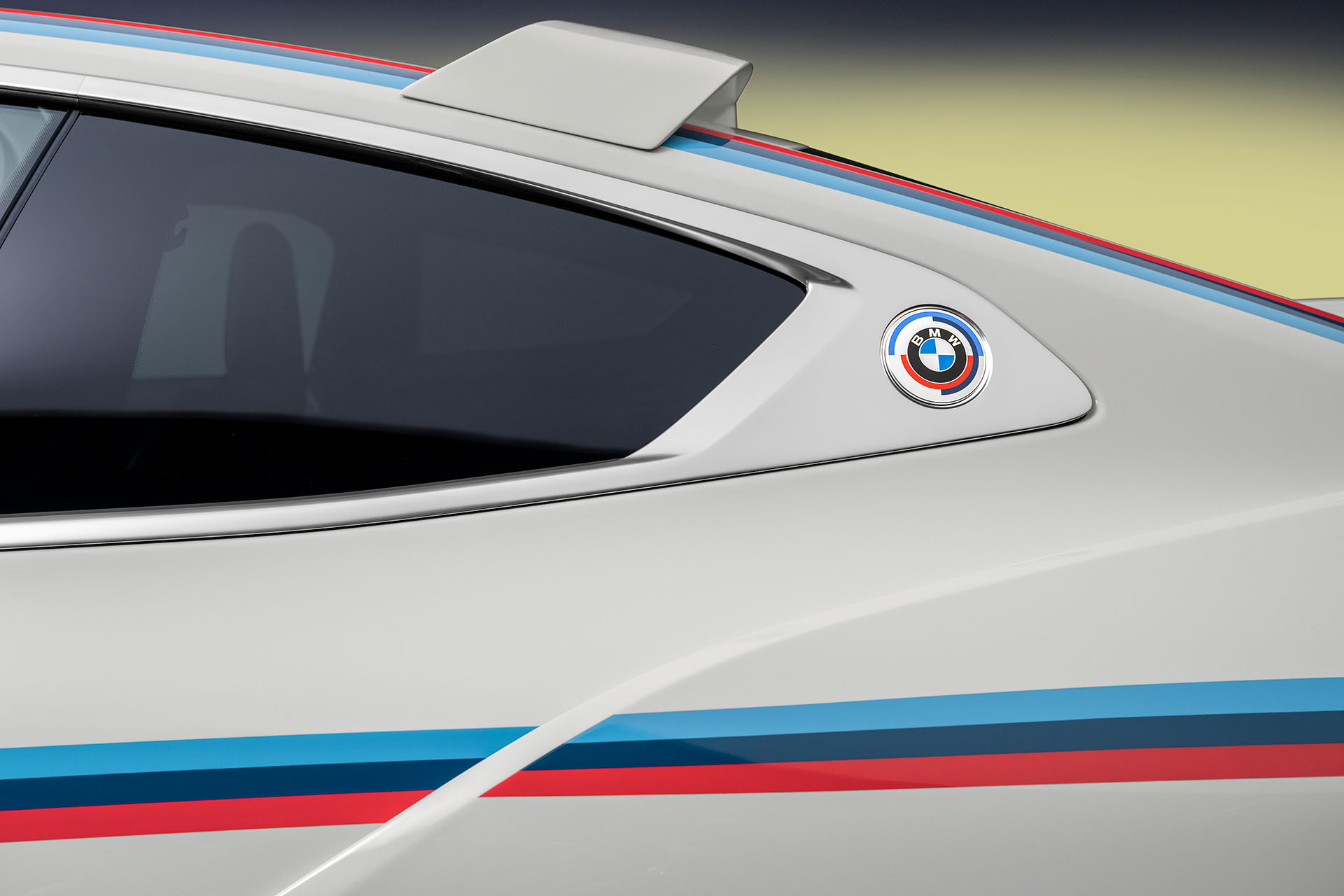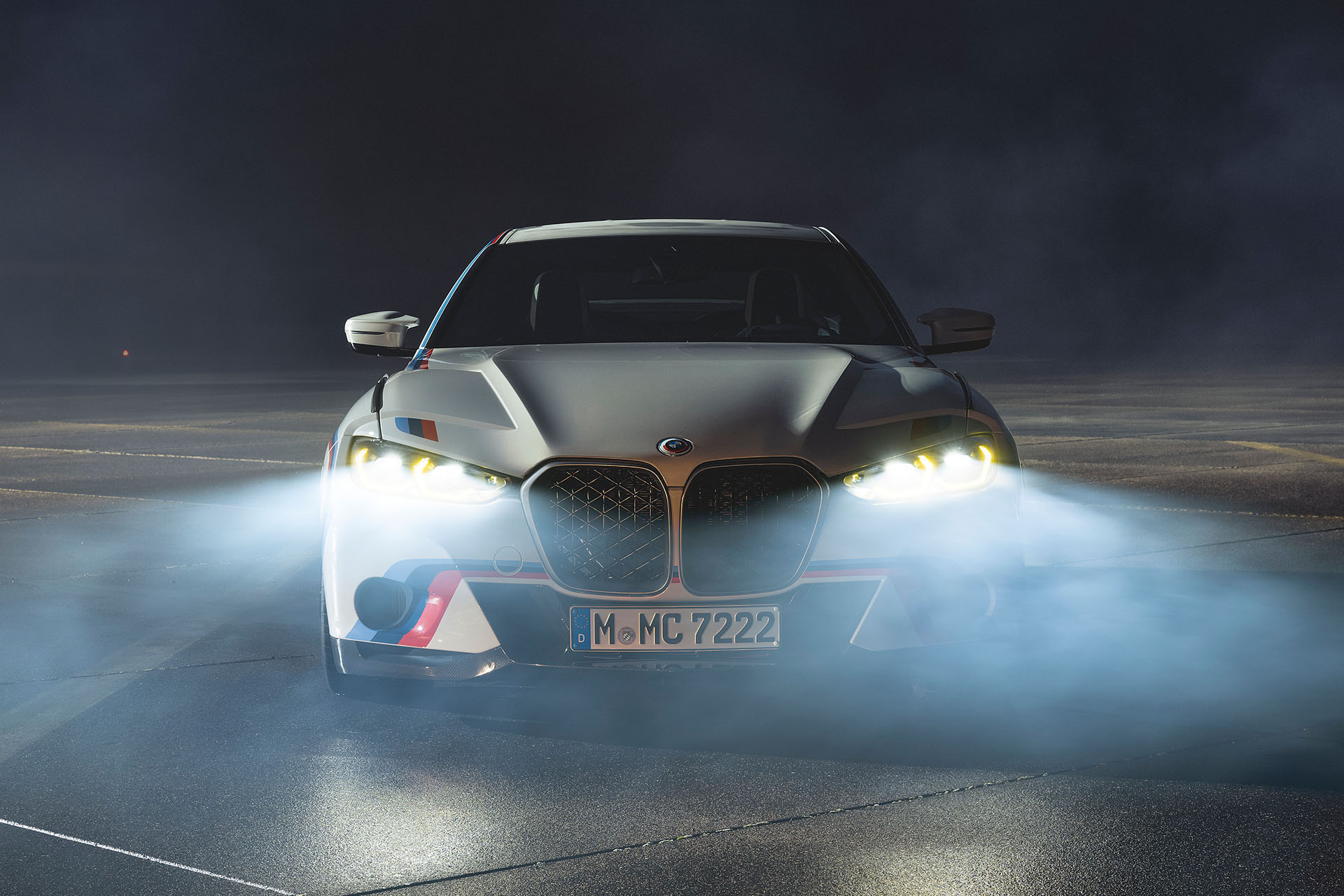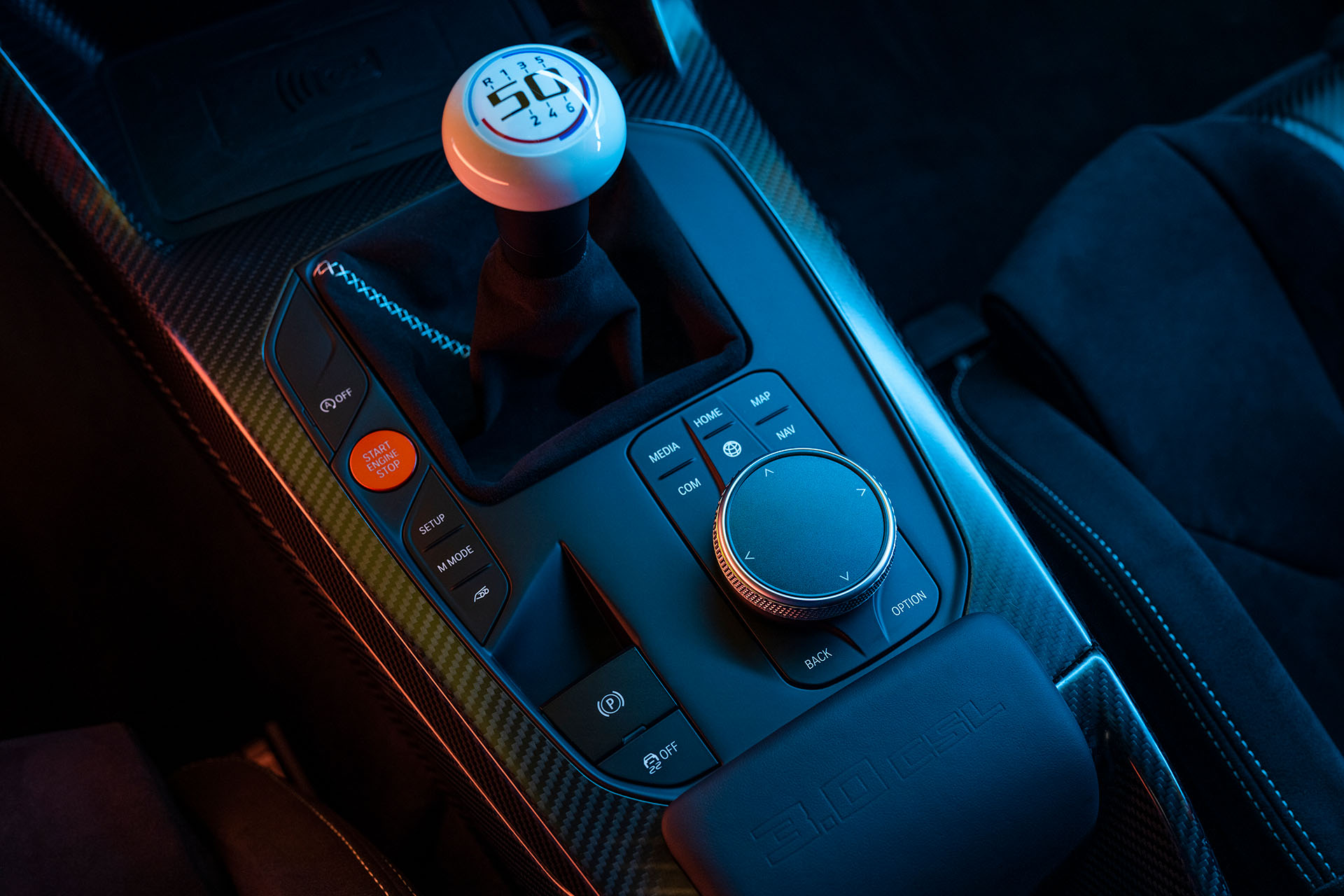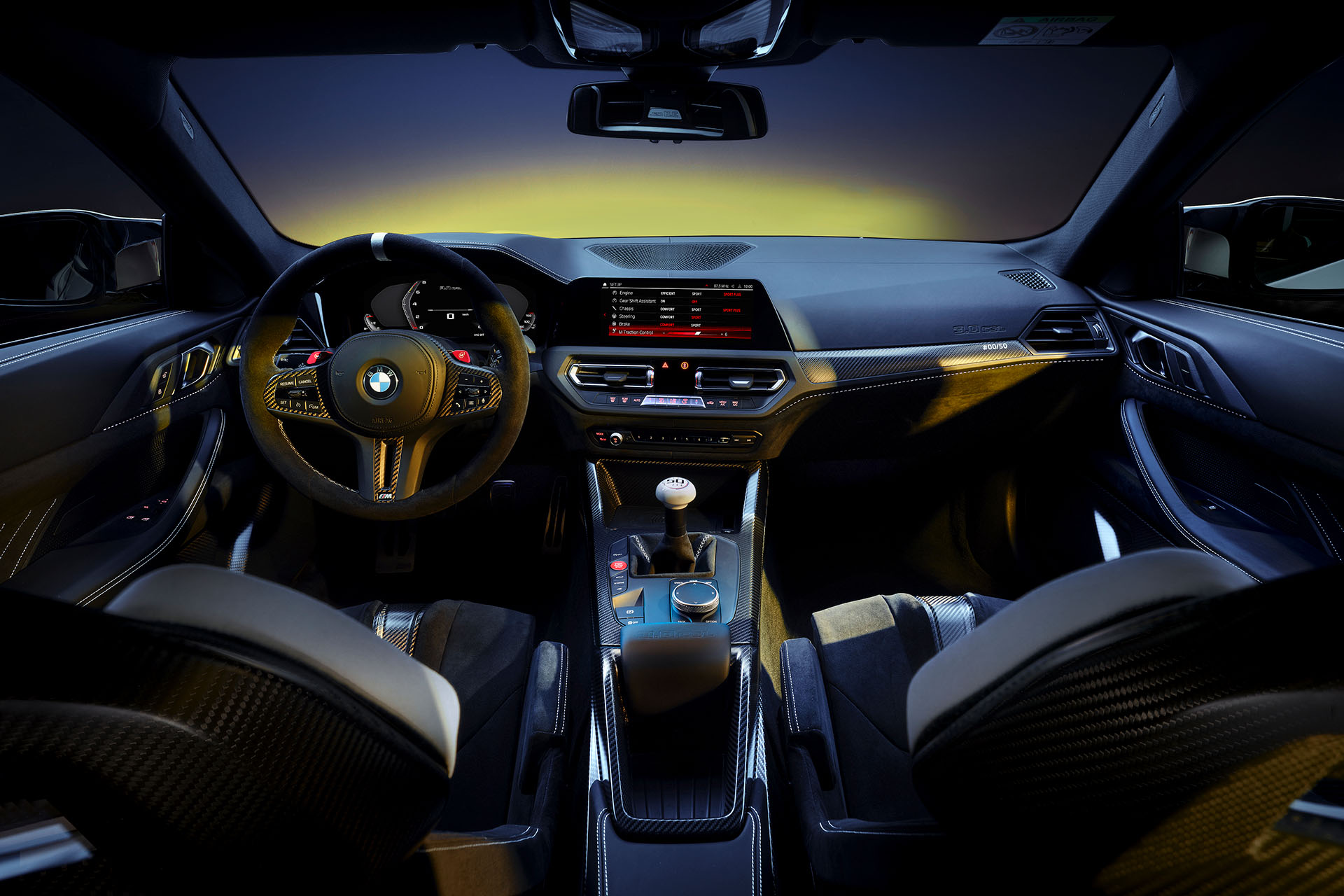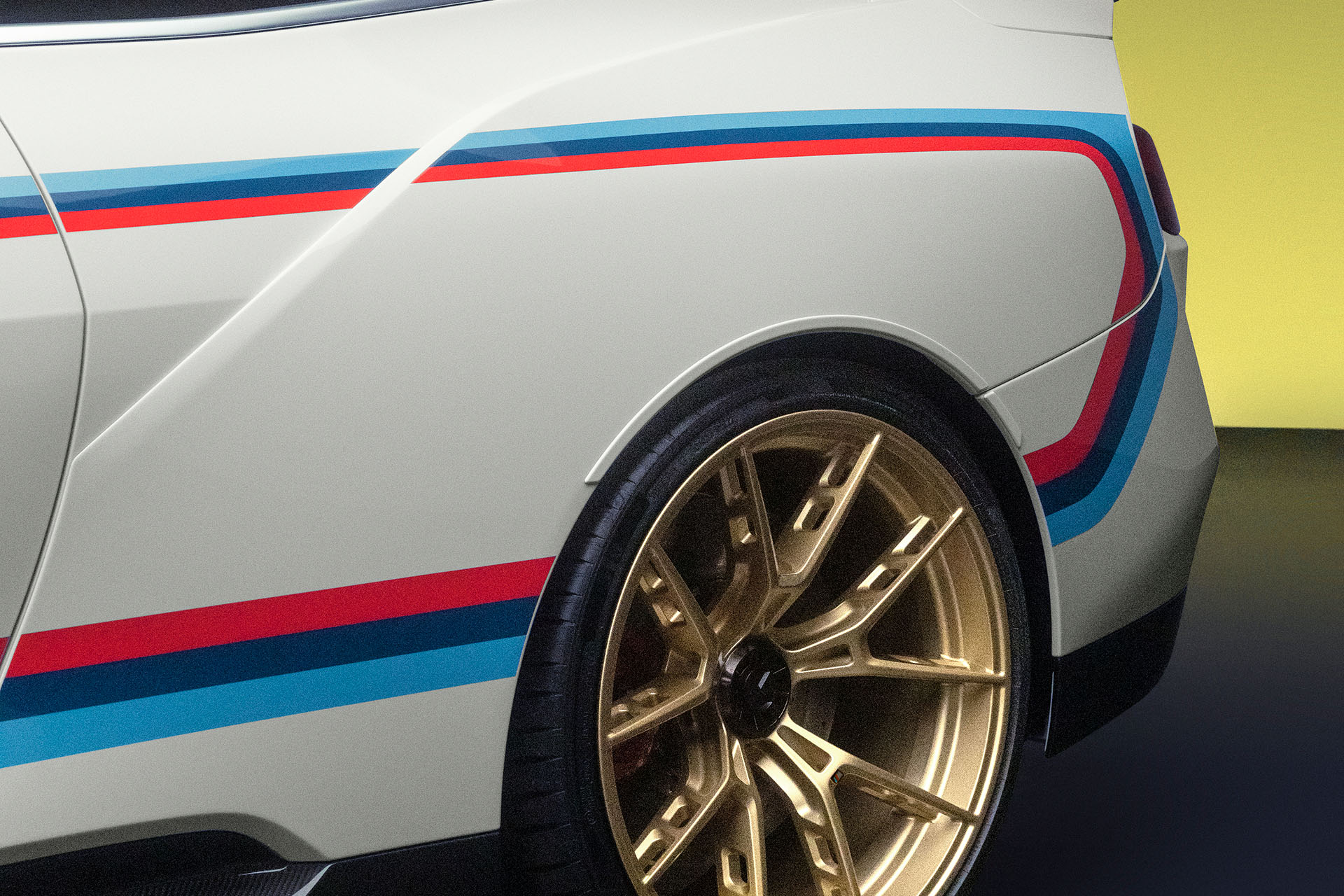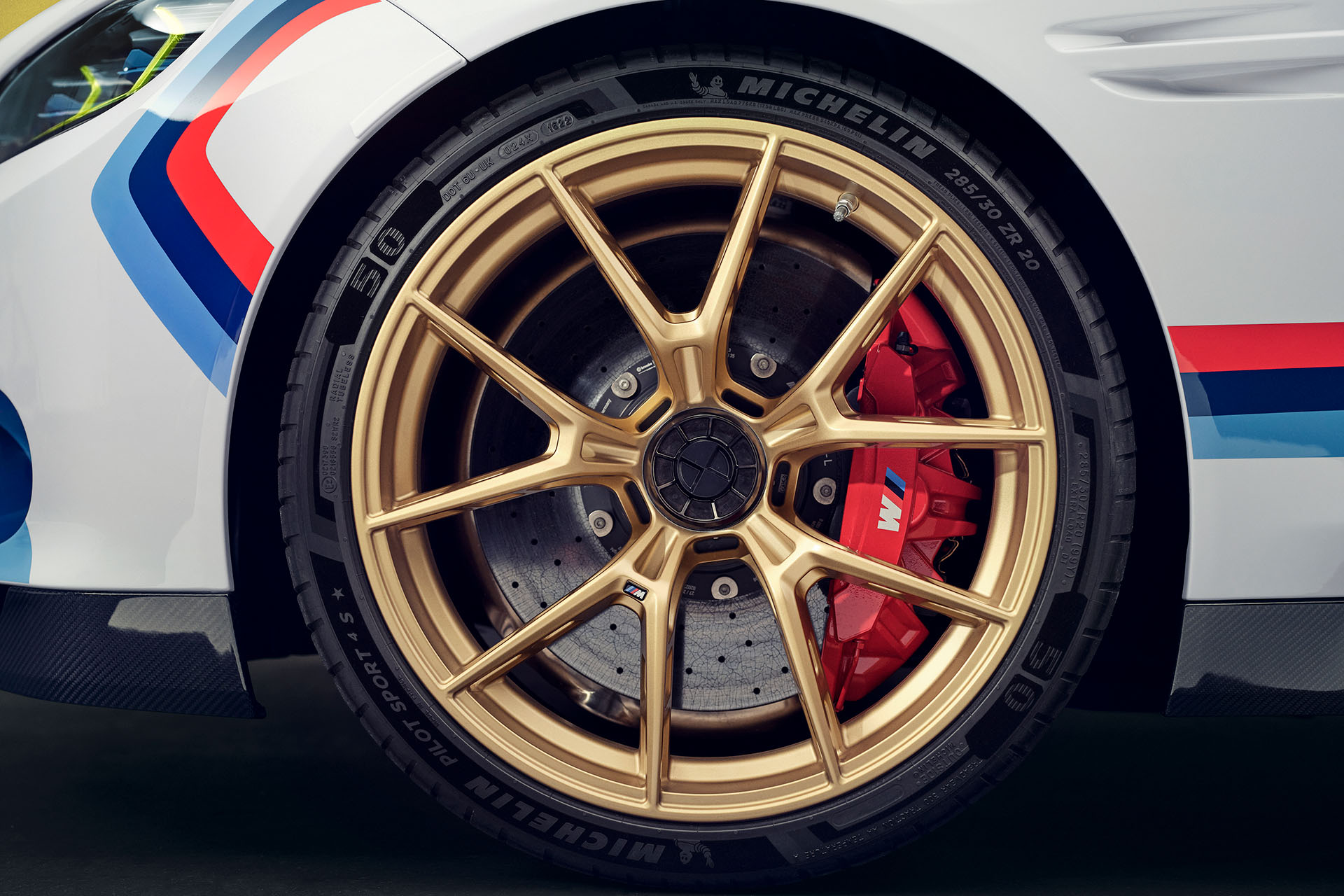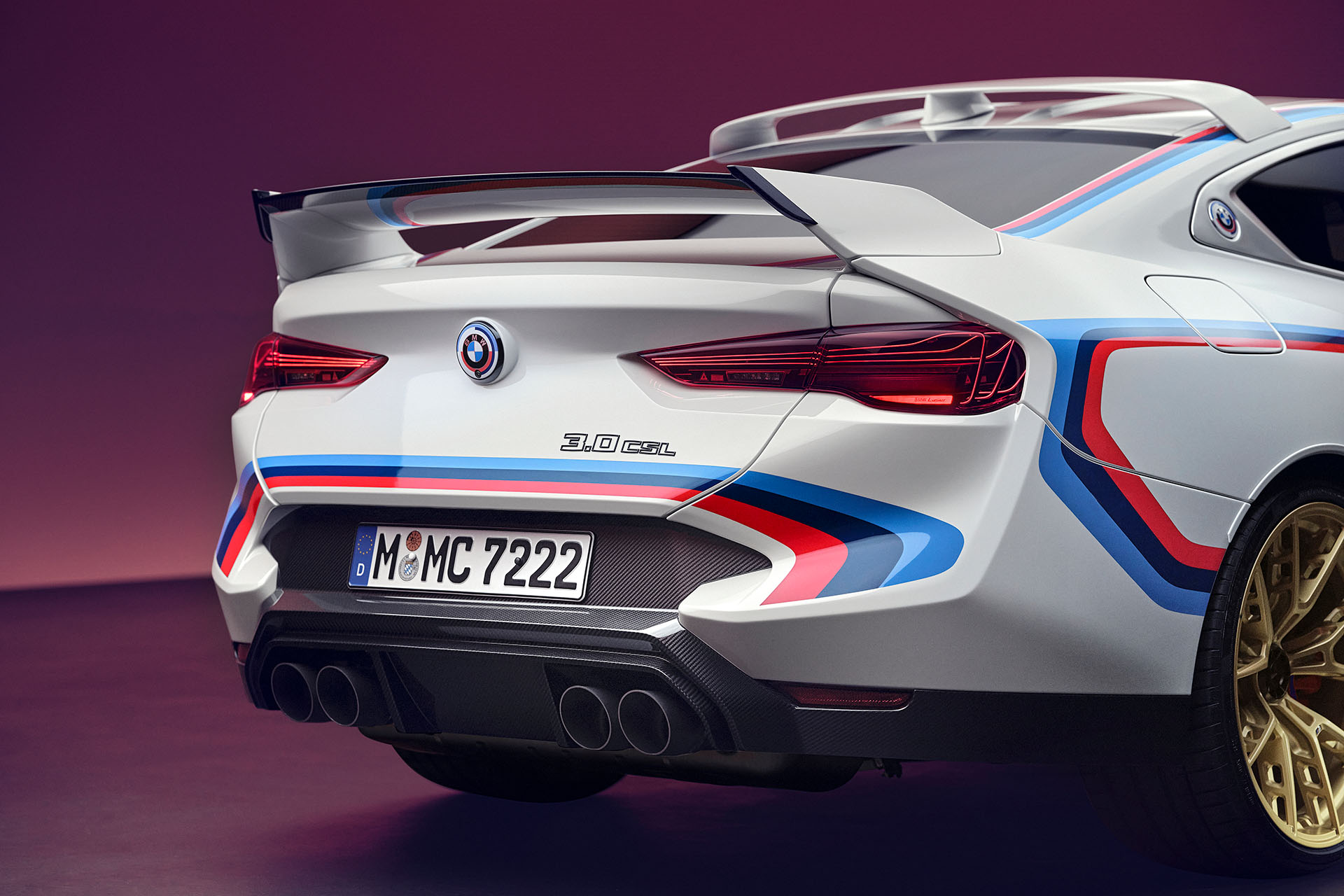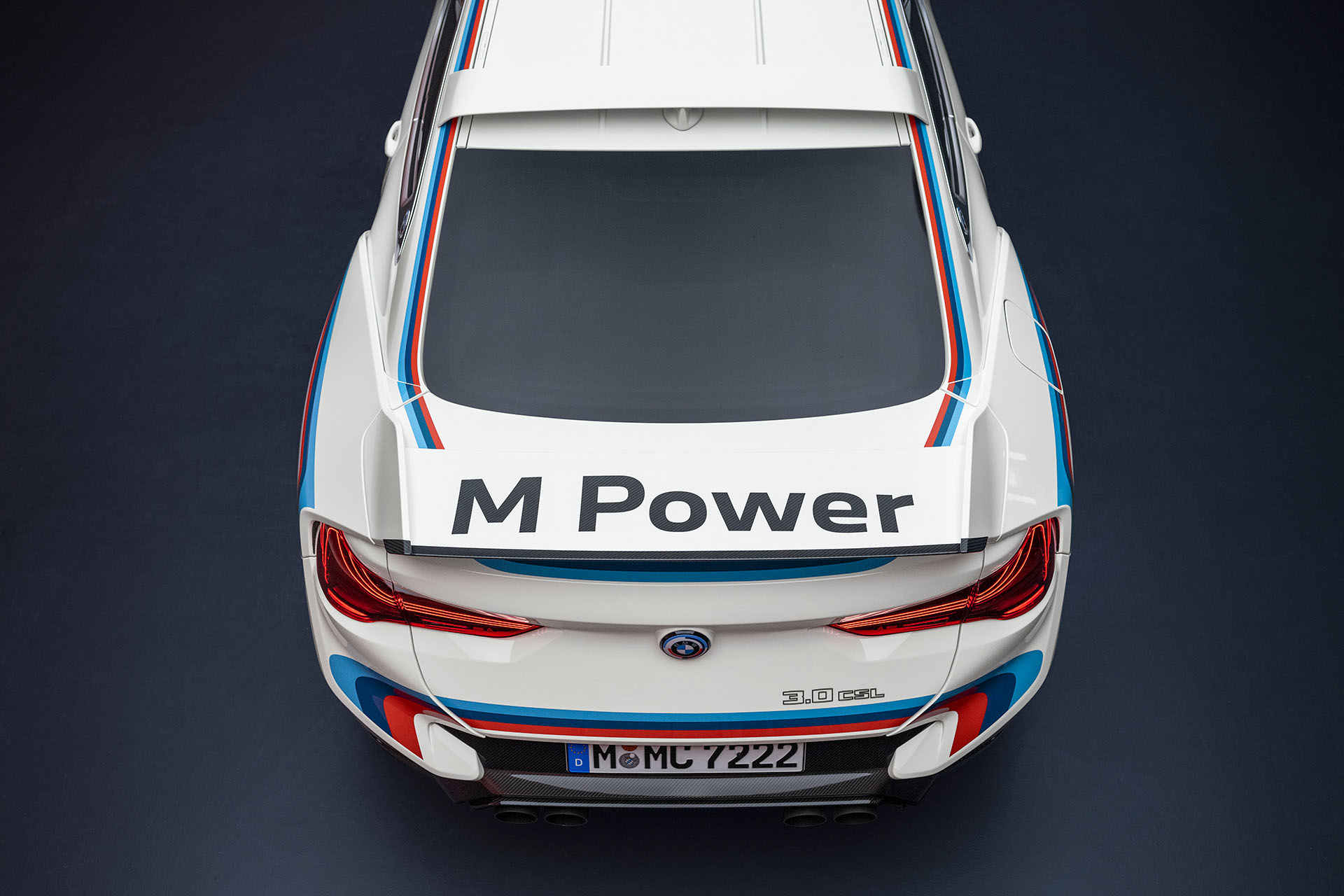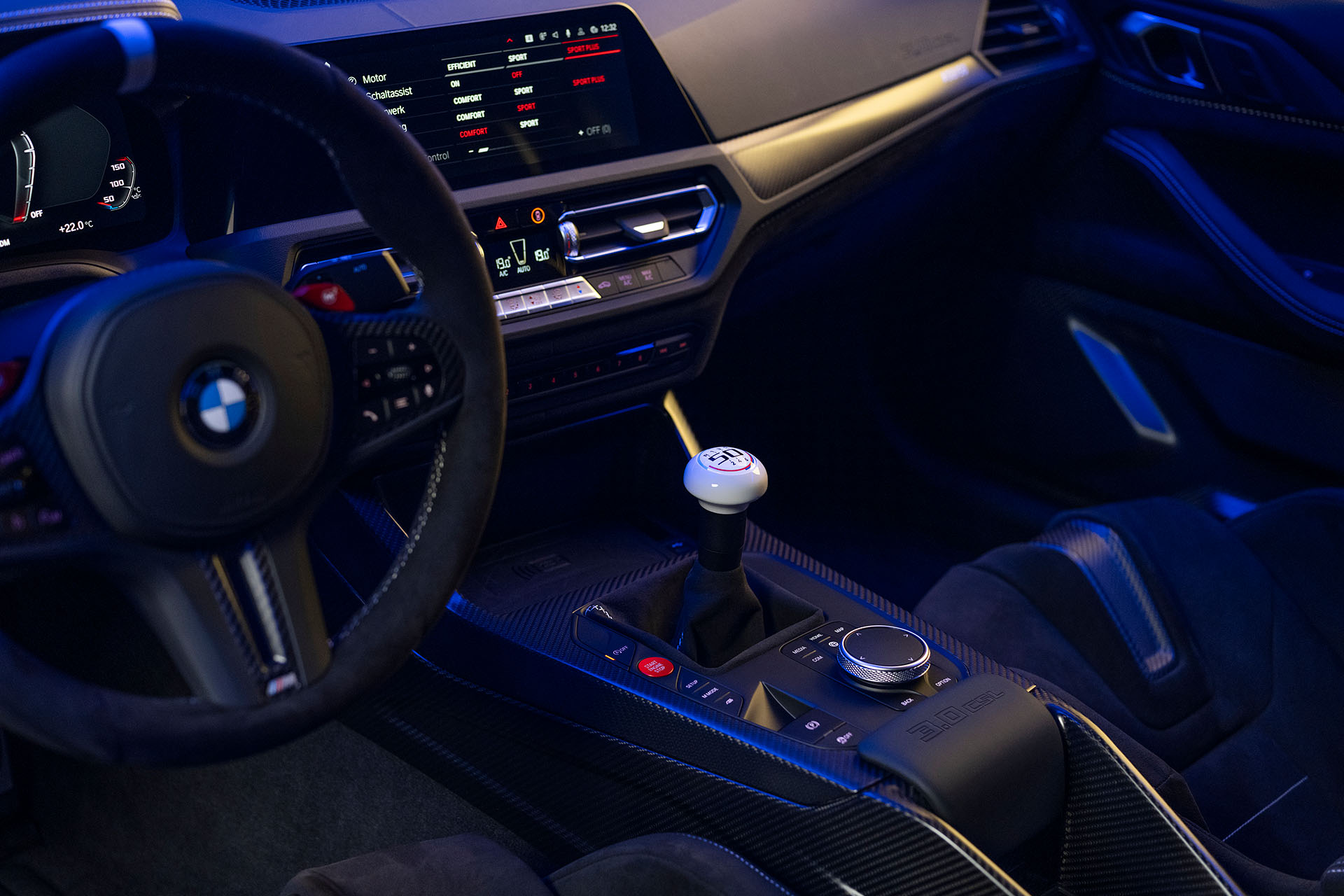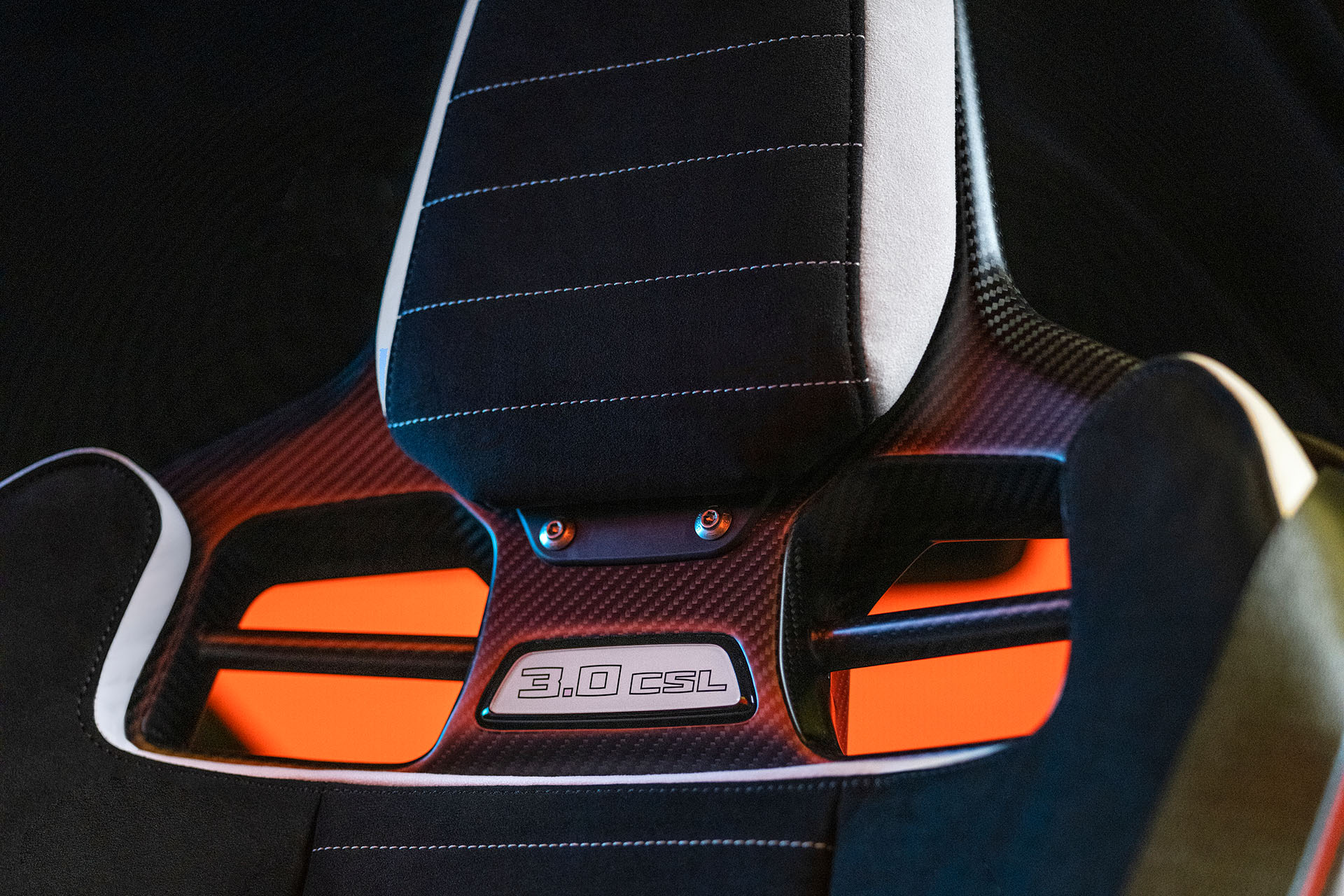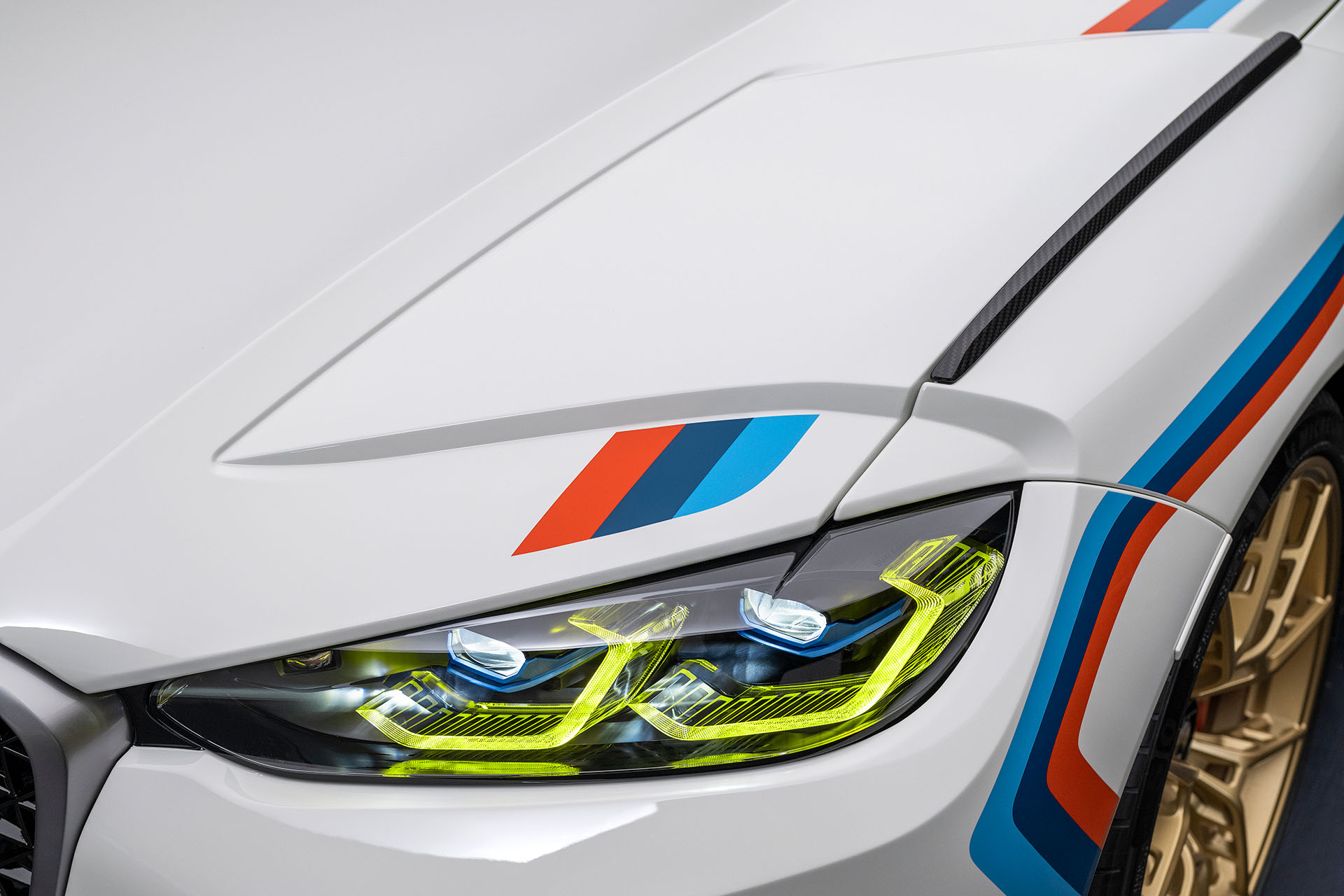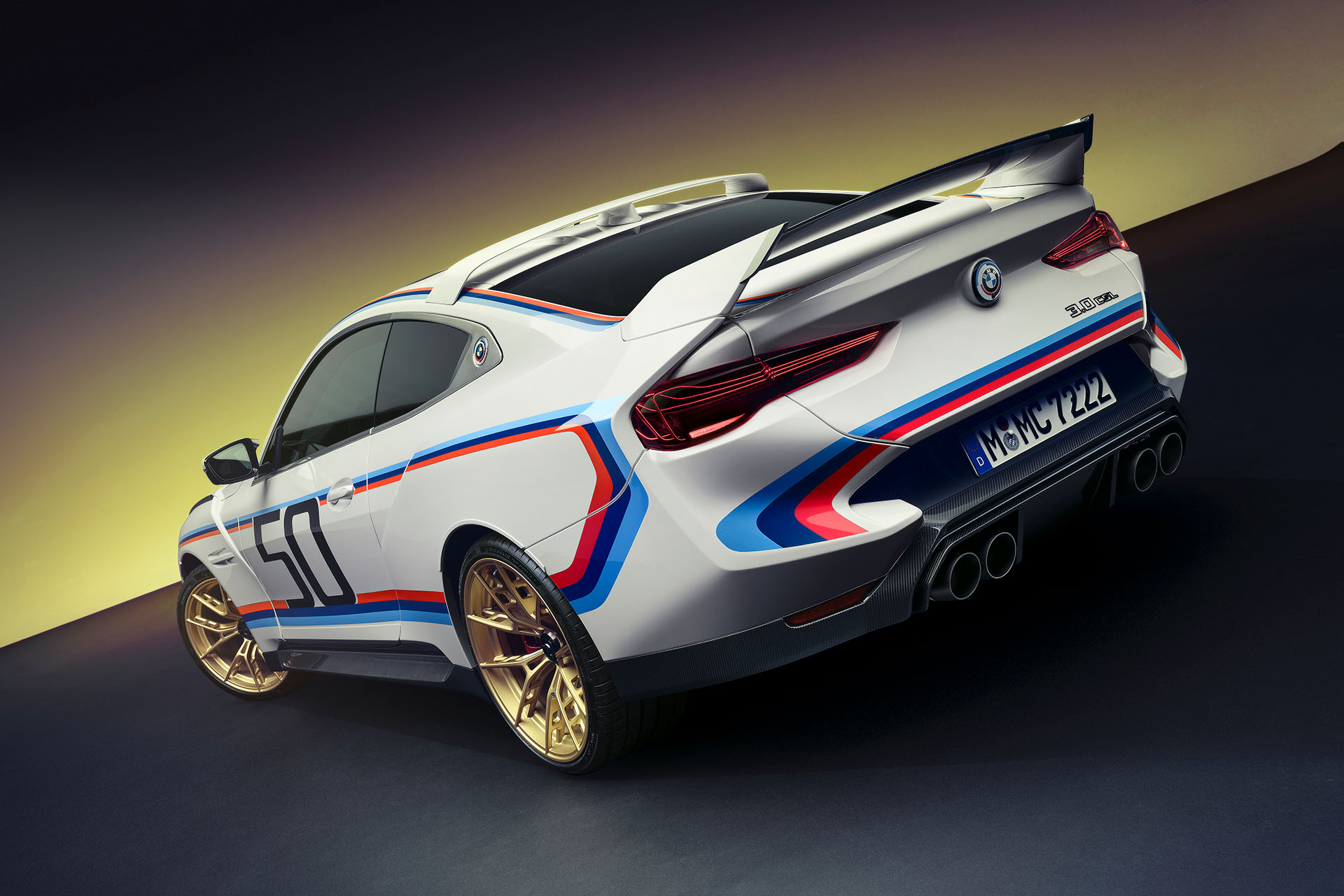The BMW 3.0 CSL was developed with the intention of combining the best of five decades of racing expertise from BMW M GmbH in an automobile with a highly emotional aura. All facets of its character – dynamic exterior elegance, a classic sportscar cockpit, intelligent lightweight construction, a straight six-cylinder engine, manual transmission, and rear-wheel drive – are based on the traditional principles of a BMW M automobile. These elements complement each other and combine with the latest technology to create the ultimate top performer in the style of the brand that has been successful for 50 years. A ride in a BMW 3.0 CSL is therefore not only an exclusive high-performance experience but also an emotional encounter with the past and present of the world’s most powerful letter.
The BMW 3.0 CSL is produced in a strictly limited edition. To mark the anniversary, exactly 50 consecutively numbered units of the special model will go on sale. Right from the start, this gives the BMW 3.0 CSL the status of a rarity that will find its place in the vehicle collections of particularly loyal and enthusiastic fans of the BMW M brand. The exclusive interior carbon fiber reinforced plastic (CFRP) components are hand produced by specially assigned bodywork specialists in Munich and at the BMW Group component factory in Landshut, the paintwork is another very bespoke process on this model, each BMW 3.0 CSL takes up to 10 days in total to complete.
The extremely high proportion of individual manual work means that the time required to assemble a BMW 3.0 CSL is many times higher than that of a conventional BMW M automobile. After completing the manufacturing process, each vehicle will undergo a multi-stage quality inspection and approval process at the main Dingolfing plant before it is released for delivery to the customer. The BMW Group Plant Dingolfing is the company’s largest European production site. In addition to building several BMW M automobiles, the luxurious BMW 7 Series and body components for Rolls-Royce Motor Cars are produced there.
The racing version of the historic BMW 3.0 CSL won the European Touring Car Championship during its inaugural season in 1973 – and repeated this title win five more times in succession from 1975 to 1979. Drivers such as Toine Hezemans, Hans-Joachim Stuck, Chris Amon, and Niki Lauda left the competition behind at the Nürburgring and numerous other circuits, followed by BMW’s first victories on US circuits as early as 1975. All these successes helped the works racing cars to gain international popularity.
The road version of the racing car, which was developed for homologation purposes, became a widely known symbol of inspiring driving pleasure focused on the essentials, especially in its final stage of development. CSL – this combination of letters in the model designation stood for “Coupé, Sport, Leichtbau” (Coupe, Sport, Lightweight), a concise summary of the two-door car’s recipe for success. In addition to wide wheel arches, its coupe-shaped body also received an eye-catching aerodynamics package, which included a front spoiler, air bars on the front side panels, and a roof spoiler. Completing the design modifications vs. the other coupes in BMW large series was a rear wing that optimized the grip of the rear wheels. The massive rear wing was not approved for road use and therefore lay in the boot when the vehicle was delivered, but nevertheless received much public attention, earning the automobile its “Batmobile” nickname.
The new BMW 3.0 CSL is the contemporary reinterpretation of all these features anchored in its model designation. Its coupe-shaped body sets traditional accents for sporty elegance and expressive dynamics. Its drive and suspension technology stems from the latest developments for racing cars and high-performance sports cars from BMW M GmbH. And the intelligent lightweight construction reaches an outstanding level, above all through the extensive use of carbon. The power-to-weight ratio of the BMW 3.0 CSL is a mere 2.9 kilograms per hp.
Power and athleticism are signalized by the front end of the BMW 3.0 CSL, which sits low on the road. At its center is the distinctive BMW kidney grille with a lattice-shaped insert in a diamond structure. Its upright position relates to the front design of its historic ancestor. Like the side window surrounds, the kidney frame is finished in satin aluminum – a design feature that emphasizes the special status of the BMW 3.0 CSL. Together with the BMW kidney grille, two generously dimensioned recesses in the front apron, reminiscent of the air intakes on the 1970s model, ensure reliable cooling of the drive and brake systems. Sculpturally shaped air fins on the bonnet emphasize the classic lines.
Viewed from the side, the long bonnet and wide wheelbase lend the BMW 3.0 CSL an appearance that is both sporty and classically elegant, with the brand-typical three-box coupe design proportions also contributing to this. Particularly wide, diagonally offset side panels and wide side walls underline the dynamic appearance of the coupe even when stationary, with an air deflector extending along the roof line. Muscular wheel arches give an indication of the large track widths that contribute significantly to the vehicle’s high cornering dynamics. They offer space for the forged light-alloy wheels in a Y-spoke design, these being 20 inches on the front axle and 21 inches at the rear. With their intricate spokes, a gold-colored paint finish in the style of the 1970s, and a center lock, they represent design and driving dynamics highlight adapted directly from racing. The integration of the model-specific wheels into the pre-assembled axles of the BMW 3.0 CSL is part of the manufacturing process at the BMW Plant Dingolfing. At 930 Nm, the torque applied during the assembly of the center locks achieves the highest value for a BMW Group production vehicle.
The rear view of the BMW 3.0 CSL is also characterized by powerful aesthetics and reinterpreted design features of its ancestor. The most striking feature is the rear wing, which is enclosed at the side and translates the characteristic appearance of the “Batmobile” into a modern design language. Designed to generate additional downforce and optimize traction on the rear axle, the air deflector encloses the entire rear section, thus becoming a dominant visual element. For the benefit of aerodynamic balance, it is combined with a strongly pronounced carbon diffuser in the rear apron which optimizes underbody airflow.
Right from the very beginning of the 1970s, BMW Motorsport GmbH became imprinted in the memories of fans worldwide thanks to spectacular racing successes, but also because of the team’s unmistakable appearance. Just like the competition cars, the drivers’ outfits, the vehicle transporters, and all other team equipment featured uniform stripes in blue, purple, and red on a white background – a novelty at the time and a globally recognized trademark to this day. The BMW 3.0 CSL picks up on this tradition with a paint finish in non-metallic Alpine White and an elaborately applied stripe decor in the BMW M GmbH colors. The lines on the body effectively reflect the dynamic surfaces, thus bringing to the fore the powerful aesthetics of the coupe even more clearly.
The number sequences on the doors and roof of the BMW 3.0 CSL, designed in the style of early racing cars, build a bridge from the past to the present. Their design in the style of racing numbers is based on the historical model of the first BMW M automobile developed for touring car racing, whilst the number 50 refers to the anniversary of BMW M GmbH. The two BMW logos on the C-pillar provide another nod to the 1970s, positioned directly behind the counter-swing of the side window graphic known as the Hofmeister kink.
Since then, the straight six-cylinder engine with M Power has undergone impressive development. Engines of the same design mobilized an output of 204 kW/277 hp in the BMW M1 as early as 1978 and 250 kW/340 hp in the second-generation BMW M5 from 1991. The fifth-generation BMW M3 was launched in 2014 with a 317 kW/431 hp straight-six engine featuring M TwinPower Turbo technology. The version of the drive system with M TwinPower Turbo technology, which was further developed exclusively for the BMW 3.0 CSL, mobilizes a maximum output of 412 kW/560 hp. The new record for straight six-cylinder models from BMW M GmbH with road approval underpins the special status of the vehicle. Its engine develops a maximum torque of 550 Nm with linear power delivery up to a maximum speed of 7,200 rpm.
To transfer the drive power to the road, the developers of the BMW 3.0 CSL used a concept that has been tried and tested for decades for maximum driving pleasure and intensive interaction between driver and vehicle. The straight six-cylinder engine is coupled with a 6-speed manual gearbox whose spread and transmission ratios are ideally matched to the performance characteristics. Precisely defined gear shift travel enables fast and precise gear changing. The gearshift knob made exclusively for the BMW 3.0 CSL protrudes from the center console and is a luxurious accessory. It immediately arouses anticipation for the manual gearshift, which lies snugly in the hand, and, with its white surface, the engraved gearshift diagram, and the number 50, is reminiscent of the beginnings of BMW M GmbH in the 1970s.
The use of carbon and other lightweight construction measures in the interior of the BMW 3.0 CSL emphasizes its pure sports car characteristics. Instead of additional seats, the rear offers a storage compartment with two integrated helmet compartments. CFRP trim in the door panels and reduced acoustic insulation also contribute to the extremely sporty flair. The driver and front passenger sit in M Carbon full bucket seats, which convey a highly emotional and unique racing feeling every mile of the way. The diagonal connections between the seat surface and the backrest are reminiscent of the construction principle of the lightweight seats featured in the historic model. Seat height and inclination can be adjusted exclusively via a three-stage screw linkage in a workshop. The longitudinal position can be varied manually using a lever at the front edge of the seat. In addition, the M Carbon full bucket seats offer removable headrest inserts.
The matt interior trims in a carbon fiber finish feature sequential numbering for each of the 50 units available. This marking, documented in the interior from #01/50 to #50/50, corresponds in each case to the final digits of the suspension number, thus representing a visible and authentic reference to the individual vehicle identity.


